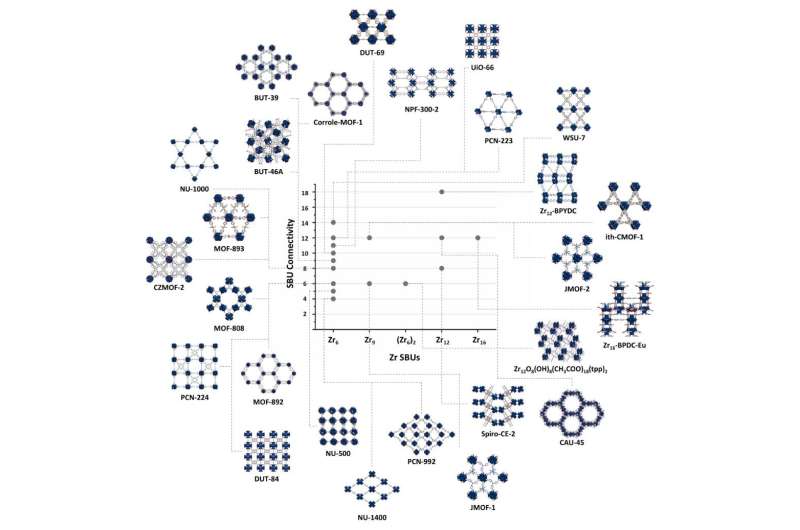This article has been reviewed according to Science X's editorial process and policies. Editors have highlighted the following attributes while ensuring the content's credibility:
fact-checked
trusted source
proofread
Discovery of a crucial clue to accelerate the development of carbon-neutral porous materials

Metal-organic frameworks (MOFs) have been gaining attention as promising carbon-neutral porous materials, thanks to their high performance in gas storage, separation, and conversion. The geometric building blocks of MOFs, metal clusters and organic linkers, allow chemists to predict and synthesize new structures like assembling LEGO. However, finding new metal building blocks is still a daunting challenge due to the complex nature of metal ions in synthesis.
A research team, led by Professor Wonyoung Choe at Ulsan National Institute of Science and Technology (UNIST), South Korea, was inspired by the molecular metal clusters previously synthesized before realized in porous materials. This implies one can predict future MOFs by looking closely at their metal building blocks.
The research team compared zirconium metal clusters found in both MOFs and molecules. Zirconium-based MOFs are one of the representative metal-organic porous materials with remarkable stability and a broad range of applications. The researchers identified seven types of zirconium building blocks in MOFs and discovered additional fourteen types of potential metal building blocks.
The research team provided a library of those various molecular clusters for future metal building blocks of MOFs, and suggested practical synthetic strategies. This research is expected to greatly accelerate the discovery of new MOFs by presenting metal cluster candidates whose structures were previously difficult to predict.
"Zirconium metal clusters feature outstanding molecular adsorptive and catalytic properties depending on their structures. Very excited to see what properties the new zirconium cluster will show," said Dr. Dongsik Nam, the first author of the study.
"This research can be extended to various metal clusters in MOFs beyond zirconium," noted Professor Wonyoung Choe. "New metal building blocks will provide a big hint to accelerate the discovery of future carbon-neutral porous materials."
The findings of this research have been published in Trends in Chemistry.
More information: Dongsik Nam, Jiyeon Kim, and Wonyoung Choe, Evolution of Zr Nodes in Metal-organic Frameworks, Trends in Chemistry (2023).





















